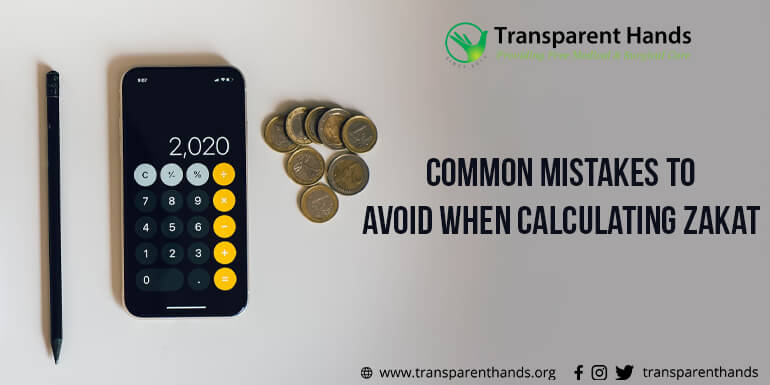Common Mistakes to Avoid When Calculating Zakat

Zakat is one of the five pillars of Islam and is a compulsory obligation for Muslims who meet the Nisab threshold. It is calculated as 2.5% of a person’s assets eligible for Zakat and is payable annually. While calculating it is relatively straightforward, there are common mistakes to avoid when calculating Zakat, resulting in paying less or more than the actual amount owed. In this article, we will discuss these common mistakes people make when calculating Zakat and how to avoid them.
Mistakes People Make When Calculating Zakat
-Not Identifying All Assets
One of the most common mistakes people make when calculating Zakat is not identifying all eligible assets correctly. These assets include cash, gold, silver, jewelry, stocks, rental income, and business inventory. Some people may forget to include one or more of these assets in their Zakat calculation, resulting in paying less than owed. Therefore, it is essential to identify all Zakatable assets accurately before calculating Zakat.
-Miscalculating the Nisab Threshold
Another one of common mistakes to avoid when calculating Zakat is miscalculating the Nisab threshold. The Nisab threshold is the minimum amount of wealth that a person must have before Zakat becomes obligatory. The current threshold for gold is approximately $5,000, and for silver, it is approximately $400. Some people may use an incorrect value, resulting in incorrect Zakat calculations. Therefore, it is essential to calculate the Nisab threshold accurately to avoid any inconvenience.
-Failing to Deduct Debts Correctly
Deducting outstanding debts from Zakatable assets is an essential step in Zakat calculation. However, some people may deduct more than their actual debt or fail to consider debts that cannot be deducted. For example, a loan taken for personal expenses cannot be deducted from Zakatable assets. Therefore, it is crucial to deduct debts accurately before calculating Zakat.
-Incorrectly Applying the Zakat Rate
The Zakat rate is 2.5% of Zakatable assets. However, some people may apply this percentage to their total wealth, including non-Zakatable assets. This mistake can result in paying more Zakat than owed. Therefore, it is essential to apply the Zakat rate only on the eligible assets.
-Not Considering Zakat Paid Throughout the Year
Some people may forget to include Zakat paid throughout the year, resulting in paying more Zakat than owed. For example, if you paid $500 in Zakat six months ago and your Zakatable wealth remained the same, you only owe the difference of $2,000 (Nisab threshold) – $500 (Zakat paid) = $1,500 x 2.5% = $37.50. Therefore, it is crucial to consider Zakat paid throughout the year before calculating Zakat.
Now that you know the common mistakes to avoid when calculating Zakat, here are some tips about how to avoid them.
- Make a list of all Zakatable assets before calculating Zakat to ensure that no asset is left out.
- Calculate the Nisab threshold accurately before calculating Zakat.
- Deduct outstanding debts accurately, including debts that cannot be deducted.
- Apply the Zakat rate only to Zakatable assets.
- Consider Zakat paid throughout the year before calculating Zakat.
- Use an accurate Zakat calculator to ensure that you calculate the exact amount payable.
In conclusion, Zakat is an essential obligation for Muslims, and it is essential to calculate it accurately to fulfill this obligation correctly. By considering and understanding common mistakes to avoid when calculating Zakat, Muslims can ensure that they are calculating Zakat accurately and fulfilling this fundamental obligation correctly.










Leave Your Comments